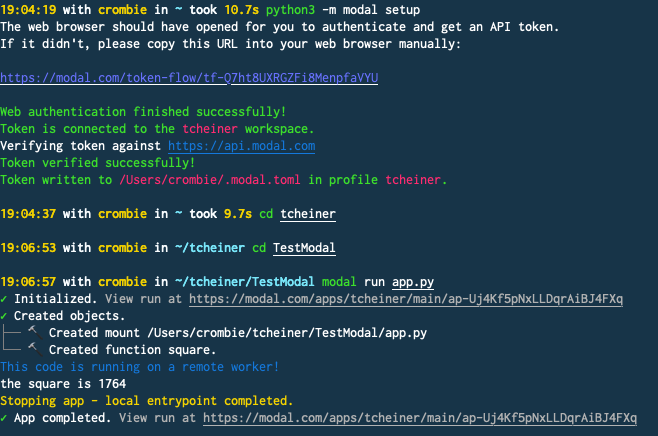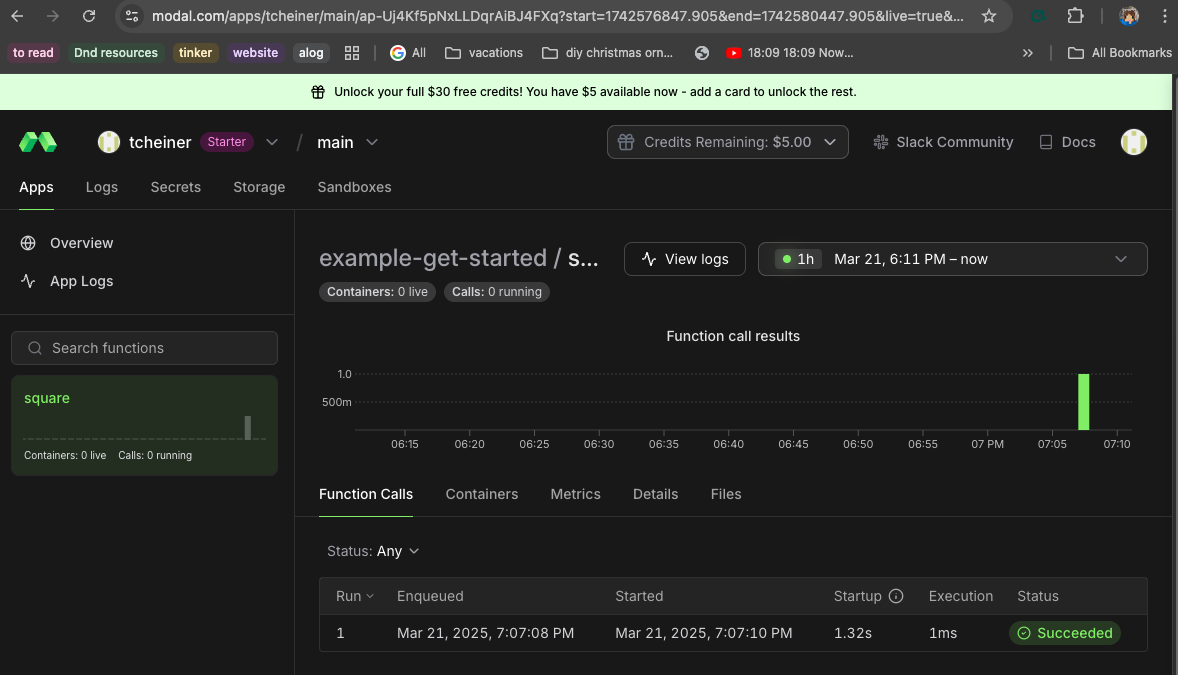Looked into learning Go, after reading an article that Microsoft is doing away with Typescript. It tickled me because it is derived from C++, Jon would love it.
I want to develop some of my own stuff by training my own LLM. Looking at recommended laptops and realized that it may be better if we set up an inference server at home to just run our LLMs and serve it to us. Looked at that and it seems fairly easy. Then I stumbled across Modal, which offers free credits per month if you want to try them out.
So I signed up for it, walk through a tutorial and whoa. SO EASY. Documentation is great, which is always rare.
Console view:
 Server view:
Server view:

Per reading the docs, and doing some sample runs and test code, Modal is quite awesome in terms of getting up and running quickly. A few lines of python code and you have an API endpoint. That makes testing any proof of concept quick fast. We can work out the breakpoints on when to move to a more efficient hosting solution if it ever comes to that. Digging into Modal a bit further, it looks like it has a rate limit of 200/second. It does api using FastAPI, and that is easier to pickup and develop then learning how to write AWS Lambdas and testing it locally.
Quoting Modal’s docs:
How do web endpoints run in the cloud? Note that web endpoints, like everything else on Modal, only run when they need to. When you hit the web endpoint the first time, it will boot up the container, which might take a few seconds. Modal keeps the container alive for a short period in case there are subsequent requests. If there are a lot of requests, Modal might create more containers running in parallel.
For the shortcut @modal.fastapi_endpoint decorator, Modal wraps your function in a FastAPI application. This means that the Image your Function uses must have FastAPI installed, and the Functions that you write need to follow its request and response semantics. Web endpoint Functions can use all of FastAPI’s powerful features, such as Pydantic models for automatic validation, typed query and path parameters, and response types.